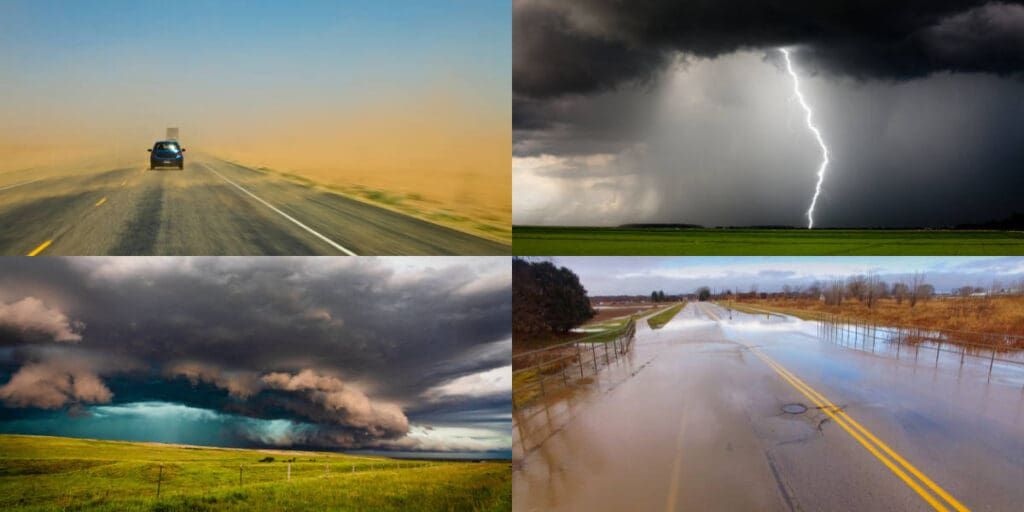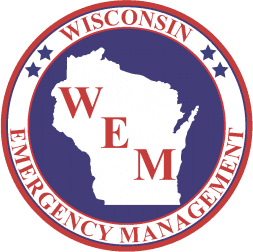
MADISON, Wis. – Spring brings the blooming of flowers, the return of migrating birds, and an increased risk of severe weather. These storms can develop quickly and knowing what to do when severe weather comes can keep everyone safe. To encourage preparation for tornadoes, thunderstorms and flooding, Wisconsin observes April 7-11 as Severe Weather Awareness Week, along with holding statewide tornado drills on Thursday, April 10.
“It is essential people take time during this important week to ensure each Wisconsinite knows what to do when a tornado warning or severe storm is in their area,” said Wisconsin Emergency Management Administrator Greg Engle. “During Thursday’s tornado drills, we encourage families, businesses, and schools to spend a few minutes going over their plans and identifying where to seek shelter.”
Wisconsin averages 23 tornadoes each year. In 2024, the National Weather Service (NWS) confirmed 45 tornadoes in the state, the third highest documented number of tornadoes. This includes 22 from the month of May, 18 of which touched down on May 21.
To stay safe during severe weather, ReadyWisconsin encourages people to do the following:
- Create an emergency plan and practice it.
- Know where designated shelters are located at home, work, and school. Be ready to go there when a tornado warning is issued.
- Have multiple ways to receive alerts about approaching severe weather. Outdoor warning sirens, NOAA Weather Radios, local media, and mobile devices are all important tools. Don’t rely on any single source for important life-saving information.
- If you have a mobile device, make sure it is enabled to receive Wireless Emergency Alerts (WEA). On many devices, that option is available in the settings menu. Find out more about WEA at https://readywisconsin.wi.gov/be-informed/be-alert/.
- Stay weather aware by checking the daily forecast for your area.
- Create an emergency kit for your home. Find tips for making a kit at https://readywisconsin.wi.gov.
Wisconsin’s annual statewide tornado drills will take place on April 10 at 1:45 p.m. and 6:45 p.m., offering an opportunity to practice your tornado sheltering plans. Schools, businesses, and homes are encouraged to practice going to their nearest tornado shelter during the drills, as if there were an actual tornado warning in effect. Ideal tornado shelters can include a basement, a ground floor interior room of a building, or a specially constructed safe room designed to withstand high winds and falling debris.
During the drill times, Wisconsin’s NWS offices will conduct NOAA Weather Radio tests that can be heard if you are actively listening to those devices or have one programmed to activate on test alerts. Local media outlets may also participate on the air or over social media. Some communities may also choose to test their outdoor warning sirens during the drill times. Check with local emergency management offices for information on siren testing schedules.
If there is a threat of severe weather in Wisconsin on April 10, the statewide drills will be postponed until Friday, April 11. The drills will go on in all other conditions, including non-severe weather (clouds, rain, dark sky, scattered thunderstorms, etc.). If severe weather is also expected on Friday, the drills will be cancelled. Notification of the drill status will be posted at http://readywisconsin.wi.gov by 10 a.m. on the morning of April 10.
“Staying safe from severe weather is everyone’s responsibility,” said Engle. “While the statewide drills provide a coordinated time to practice what they should do during a tornado, the most important thing people can do is exercise their plan when they can safely do so, even if it needs to be at a different time.”
For more information on emergency preparedness and advice on creating your own emergency plan, visit https://readywisconsin.wi.gov. You can also follow ReadyWisconsin on Facebook, X, Instagram, and Bluesky for tips on emergency preparedness throughout the year!

